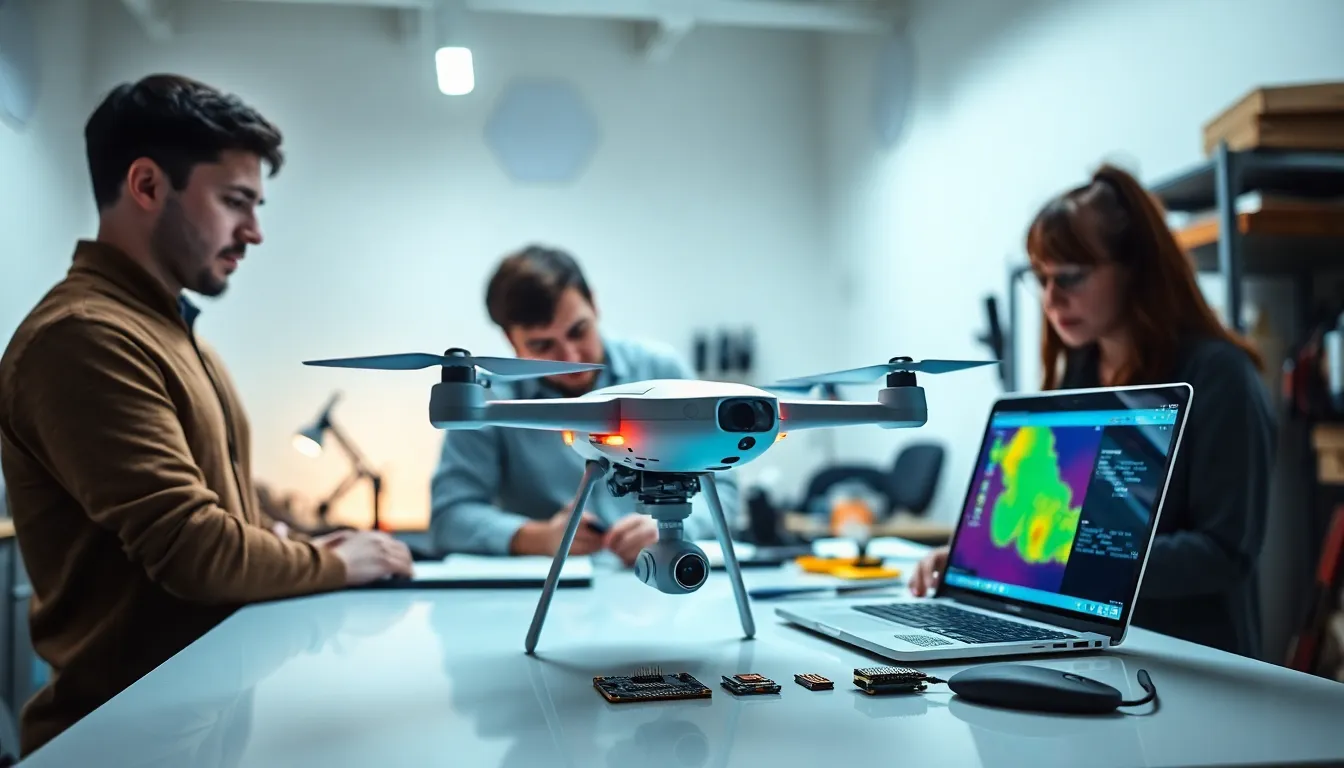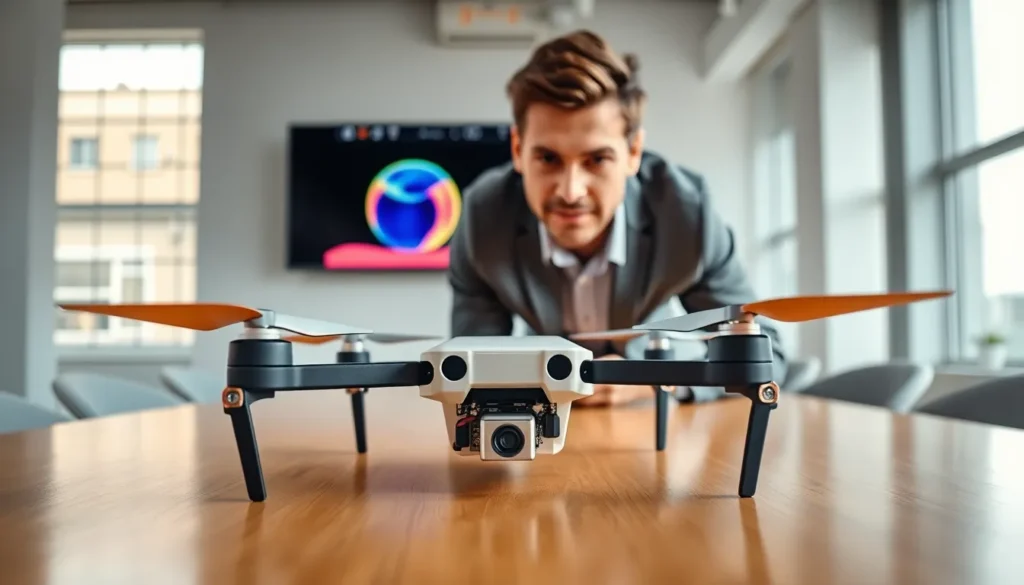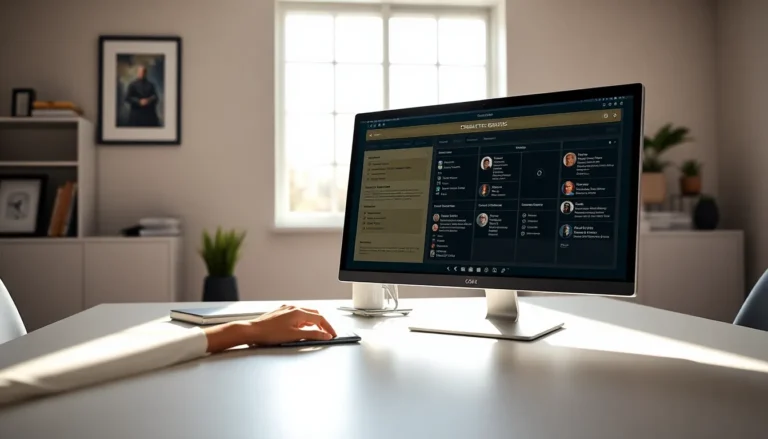Table of Contents
ToggleAre you ready to take your drone game to the next level without spending a fortune? Enter the world of Raspberry Pi Zero thermal drones, small, powerful, and incredibly versatile. These little wonders pack a punch, blending thermal imaging with budget-friendly technology. Who knew that building a thermal drone could be both fun and rewarding? Buckle up as we jump into the essentials, applications, and future of Raspberry Pi Zero thermal drones.
Overview of Raspberry Pi Zero Thermal Drones

Raspberry Pi Zero thermal drones represent a fascinating union of technology and creativity. At their core, these compact drones use the Raspberry Pi Zero, a minuscule computer that’s taking the tech world by storm. Equipped with thermal cameras, these drones excel in capturing heat signatures, making them invaluable for various applications.
Imagine flying a drone that helps in search and rescue missions by detecting body heat in difficult terrains. Or, consider a thermal drone assisting in agricultural practices by identifying areas needing irrigation. The advantages are vast, but the fun lies in the build process. With a bit of curiosity and some DIY spirit, anyone can embark on this tech adventure.
Applications of Thermal Drones
Thermal drones have carved out significant niches across diverse sectors. Here are some standout applications:
Search and Rescue Operations
In emergency situations, every second counts. Drones equipped with thermal cameras can quickly locate lost individuals, even in dense forests or mountainous areas. Their ability to detect body heat allows rescue teams to respond without delays.
Agriculture
Farmers are embracing technology like never before. Thermal drones help assess crop health by identifying temperature variations. Investors are now using them for irrigation management, saving time and water resources, definitely a win-win situation.
Building Inspections
In the construction field, old structures can house hidden issues. Thermal imaging helps identify problems like heat loss or moisture accumulation, ensuring that properties are maintained effectively. No one likes surprises about their real estate investments.
Environmental Monitoring
Researchers use these drones to monitor wildlife and understanding ecosystem variations. From tracking animal movements to locating thermal vents, the data provided is critical in protecting our planet.
Building Your Raspberry Pi Zero Thermal Drone
Crafting your Raspberry Pi Zero thermal drone might sound daunting but fear not. It’s an exciting challenge that brings a great sense of achievement. Here’s how to get started:
Essential Components and Tools
To get on this roller coaster of tech, gather your essential gear:
- Raspberry Pi Zero: The heart of your drone. Make sure you have the right model.
- Camera Module: A thermal camera is vital, such as the FLIR Lepton.
- Frame: Lightweight materials like carbon fiber or plastic help keep your drone nimble.
- Battery: Choose a reliable LiPo battery for long flight times.
- Propellers, Motors, and Controller: Don’t forget these: they’re crucial for flight stability and control.
Step-by-Step Assembly Process
Assemble your creation step by step:
- Frame Assembly: Start by putting together your frame.
- Mount the Motors: Attach your motors to the frame, ensuring they’re secure.
- Install the Flight Controller: Connect your flight controller to the motors and battery.
- Attach the Raspberry Pi: Secure the Raspberry Pi Zero in position to communicate with your camera.
- Mount the Camera Module: Finally, connect the thermal camera and ensure it’s perfectly positioned.
Before you know it, you’ll have a handcrafted drone ready to soar. If only assembling IKEA furniture was this satisfying.
Programming the Drone for Thermal Imaging
Once you’ve built your drone, programming it for optimal thermal imaging is the next step. Don’t worry if coding isn’t your forte: there’s a wealth of resources to help you along the way.
Start by installing the appropriate operating system on your Raspberry Pi Zero. Many opt for Raspbian, which provides a user-friendly interface. Next, you’ll want to set up the thermal camera software, compromising various options like the FLIR Lepton SDK. This allows your camera to start capturing images based on configurations you’ll define, such as frame rates and resolution.
Integrate libraries available in Python to help manipulate thermal data. With a few lines of code, you can set your drone to detect specific temperature ranges, making it not only an aerial observer but a whole data collection powerhouse.
Safety and Regulatory Considerations
Before launching your newly built thermal drone into the wild sky, it’s pivotal to understand and comply with local regulations. Start by familiarizing yourself with the Federal Aviation Administration (FAA) guidelines if you’re in the U.S. They outline important criteria, such as altitude restrictions and no-fly zones, ensuring safety for both yourself and those below.
Also consider:
- Privacy Concerns: Always respect the privacy of individuals and properties.
- Insurance Options: Investigate insurance to cover potential damages or mishaps.
- Pre-Flight Checks: Make pre-flight checks a habit. Inspect your drone, ensuring all components are working correctly.
Remember: flying responsibly amplifies the grand experience of drone operation.
Future Developments in Thermal Drone Technology
The future of Raspberry Pi Zero thermal drones is as exciting as it is innovative. As technology evolves, expect advancements in thermal sensors to enhance image quality and increase efficiency. Emerging applications, like machine learning algorithms for more precise analysis, promise to exponentially expand the potential uses of thermal drones.
Also, the networking capabilities of drones are likely to improve, allowing for real-time data sharing during critical missions. Imagine flying your drone and receiving instant feedback, which could be essential in disaster relief efforts or search and rescue missions.




